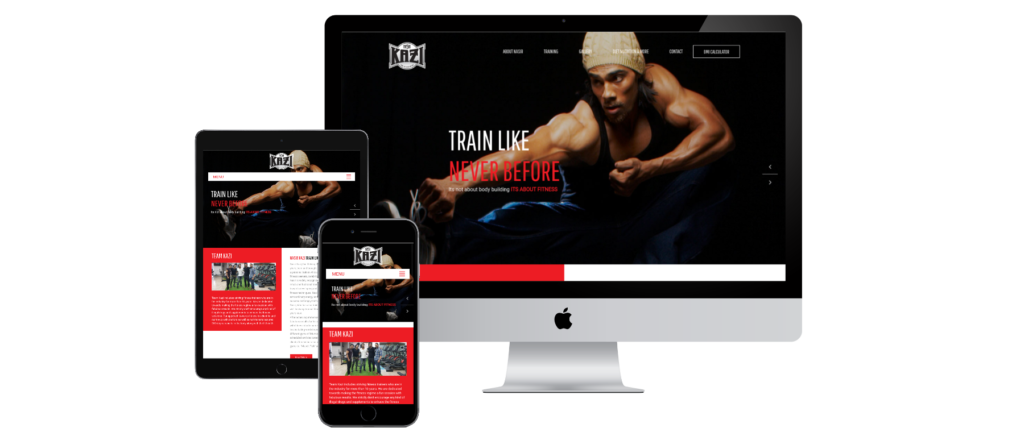In today’s digital-first world, your website is often the first point of contact between your business and potential customers. It serves as a storefront, a marketing platform, and a communication hub—all rolled into one. For businesses aiming to establish credibility, engage visitors, and ultimately drive conversions, having a professional website design is no longer optional. It’s a vital investment that can set your business apart and fuel long-term growth.
This article will explore why professional website design is so crucial to the success of any business, regardless of industry or size, and the key benefits it offers in an increasingly competitive online marketplace.
What is Professional Website Design?
Professional website design refers to creating a website that not only looks visually appealing but also functions optimally, providing a smooth and intuitive user experience. It combines elements like layout, typography, imagery, and responsiveness to create a polished online presence that reflects the brand’s identity and goals.
A professional website is more than just good looks—it should be fast, easy to navigate, mobile-friendly, and optimized for search engines. All of these factors work together to create a user-centric experience that keeps visitors engaged and leads them to take desired actions, such as making a purchase or filling out a contact form.
Why Professional Website Design is Essential for Your Business
Whether you’re a small startup or a well-established company, your website plays a central role in your marketing efforts. Here’s why professional website design is an essential part of your business strategy:
1. Creates a Strong First Impression
Your website is often the first interaction potential customers have with your brand, and we all know the importance of first impressions. Studies show that users form an opinion about a website within the first 0.05 seconds of visiting it. An outdated, unprofessional, or difficult-to-navigate site can drive potential customers away, damaging your reputation before they even learn about your products or services.
On the other hand, a professional website design creates a strong first impression, signaling that your business is trustworthy, competent, and customer-focused. By investing in professional design, you ensure visitors will stay longer on your site, increasing the likelihood of conversions.
2. Improves User Experience
User experience (UX) is at the heart of successful web design. A professional website design ensures that visitors can easily navigate your site, find the information they need, and complete actions like purchasing products or signing up for newsletters without frustration.
Good UX design focuses on clear layouts, intuitive navigation, and fast load times. It also takes into account the user journey, guiding visitors seamlessly from page to page. If your site is difficult to use or confusing, users are likely to leave quickly, resulting in high bounce rates. A professionally designed website makes sure this doesn’t happen.
3. Builds Credibility and Trust
In the digital world, appearance is everything. Customers are more likely to trust and engage with businesses that have a polished, professional website. If your website looks unprofessional or is riddled with errors, it sends the message that your business may not be reliable. Visitors may question the quality of your products or services based on your website’s design.
A professional website design builds credibility by showing that you take your business seriously. High-quality visuals, up-to-date information, and an easy-to-navigate structure help establish trust with potential customers, making them more likely to choose your brand over competitors.
4. Optimized for Mobile Users
With more than half of all web traffic coming from mobile devices, having a mobile-friendly website is no longer optional—it’s a must. A professional website design ensures that your site is fully responsive, meaning it looks and works great on any device, whether it’s a desktop, tablet, or smartphone.
A responsive design automatically adjusts the layout, text, and images to fit different screen sizes, providing a seamless experience for mobile users. This not only improves user experience but also boosts your search engine rankings, as Google prioritizes mobile-friendly websites in its results.
5. Boosts Search Engine Optimization (SEO)
Search engine optimization (SEO) is the process of improving your website’s visibility on search engines like Google. Without proper SEO, even the best-designed website won’t reach its full potential in driving organic traffic. Professional website design incorporates SEO best practices from the ground up, ensuring that your site ranks higher in search results and reaches your target audience.
Key SEO elements include fast load times, mobile responsiveness, clean code, and the use of meta tags and keywords. A professional designer understands how to structure your site in a way that search engines can easily crawl, boosting your chances of appearing on the first page of search results.
6. Increases Conversion Rates
The ultimate goal of any website is to convert visitors into customers or leads. A professional website design plays a significant role in improving conversion rates by making it easy for users to take action. Whether it’s filling out a form, making a purchase, or signing up for a newsletter, a well-designed site has clear calls to action (CTAs), user-friendly forms, and intuitive navigation that guides visitors towards conversion points.
When users have a positive experience on your website, they’re more likely to trust your business and complete the desired action. A professional design reduces friction and increases the likelihood of turning visitors into paying customers.
7. Helps You Stand Out from Competitors
In today’s crowded digital marketplace, standing out from the competition is more challenging than ever. A professional website design gives your business a unique and memorable online presence. Whether through innovative layouts, custom graphics, or personalized user experiences, a professional design ensures that your website doesn’t blend in with the competition but instead makes a lasting impression.
By offering a superior online experience compared to competitors with outdated or poorly designed websites, your business can position itself as an industry leader, attracting more customers and building a loyal audience.
Key Elements of Professional Website Design
A professional website is made up of several crucial elements that ensure it is both visually appealing and functionally sound. Here’s what goes into creating a professional website design that attracts and retains customers:
 1. Clean, Modern Aesthetics
1. Clean, Modern Aesthetics
The look and feel of your website should reflect your brand’s identity. A clean, modern design with a balanced color scheme, consistent fonts, and high-quality imagery creates a professional appearance that appeals to visitors. Avoid cluttered layouts, as they can overwhelm users and make navigation difficult.
2. Responsive and Mobile-Friendly Design
As mentioned earlier, responsiveness is key. A professional website design ensures that the site is optimized for all devices, providing a seamless experience whether users are on a smartphone, tablet, or desktop computer. This includes touch-friendly buttons, easy-to-read fonts, and layouts that automatically adjust to different screen sizes.
3. Fast Load Times
No one likes waiting for a slow website to load. In fact, research shows that users are likely to leave a site if it takes more than three seconds to load. Professional web designers optimize your site’s speed by using clean code, compressing images, and leveraging caching techniques to ensure fast load times.
4. Easy Navigation
Good navigation is one of the hallmarks of a professional website design. Visitors should be able to find the information they’re looking for quickly and easily. This means having a clear, organized menu, prominent links to important pages (such as contact forms or product pages), and a search function that works efficiently.
5. Engaging Content and Clear CTAs
The content on your website should be engaging, informative, and tailored to your audience. Clear and concise text, combined with high-quality images or videos, keeps visitors interested. A professional design also includes prominent and effective calls to action (CTAs) that guide users toward taking specific actions, such as “Buy Now,” “Contact Us,” or “Learn More.”
6. Consistent Branding
Consistency in branding is key to building recognition and trust. A professional website design ensures that your logo, colors, fonts, and overall aesthetic are aligned with your brand’s identity. This consistency creates a cohesive experience for users, reinforcing your brand and making it easier for customers to remember you.
The Cost of Professional Website Design
While it may seem tempting to cut costs by opting for DIY website builders or inexpensive design services, investing in a professional website design is a smart long-term investment. The cost of professional design can vary depending on the complexity of the site, the features required, and the designer’s experience, but the return on investment is undeniable.
A professionally designed website delivers higher performance, better user experience, and improved SEO, which leads to increased traffic, more conversions, and, ultimately, higher revenue.
Conclusion
In the digital era, having a website is no longer just an option—it’s a necessity. However, not just any website will do. A professional website design is critical for making a strong first impression, building credibility, enhancing user experience, and driving conversions. By investing in a professional design, your business can stay ahead of the competition, create lasting customer relationships, and achieve long-term success.
Don’t leave your online presence to chance—invest in a website that truly represents your business and works hard to convert visitors into loyal customers.



